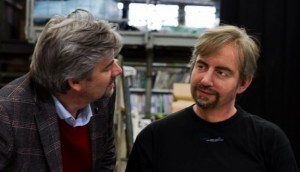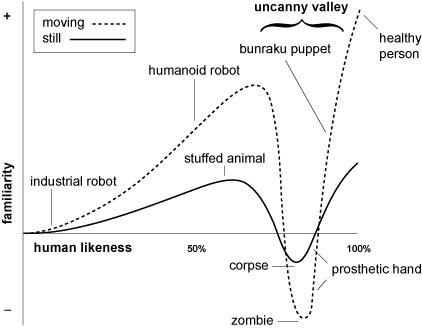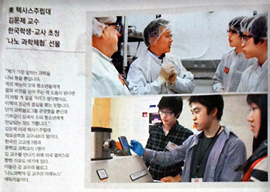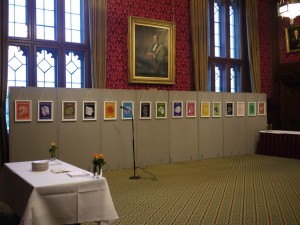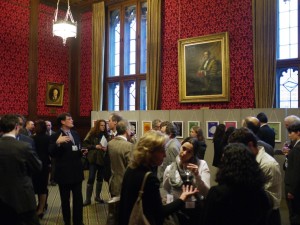Early in the new year, the University of Alberta announced the appointment of its first Scholar in Residence for Arts in Nanotechnology, Heather Graves (mentioned in my Jan. 19, 2011 posting). I contacted Dr. Graves for an interview which she very kindly gave. Before proceeding here’s a little bit of biographical information from the WRS webpage) about her [ETA Mar.11.11: photo and information about WRS webpage added],
Heather Graves is an Associate Professor of Writing Studies and the Department English and Film Studies. She is the author of Rhetoric in(to) Science: Style as Invention in Inquiry (Cresskill, NJ: Hampton, 2005); co-editor with Roger Graves of Writing Centres, Writing Seminars, Writing Culture: Teaching Writing in Anglo-Canadian Universities (Winnipeg: Inkshed Publications, 2006) and Inkshed: Newsletter of the Canadian Assoication for the Study of Language and Learning; and co-author of the Canadian Edition of The Brief Penguin Handbook (Pearson/Longman, 2007) and A Strategic Guide to Technical Communication (Peterborough: Broadview, 2007). …
As co-president of the Canadian Association for the Study of Discourse and Writing (CASDW)/ L’Association canadienne de rédactologie (ACR) (formerly the Canadian Association of Teachers of Technical Writing (CATTW)/ L’Association canadienne de professeurs de rédaction technique and scientific (ACPRTS), she has served as program chair of the annual conference held at the Congress of the Humanities and Social Sciences.
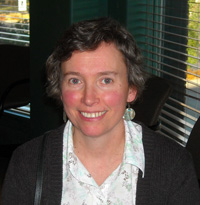
Professor Heather Graves, Canada's new Arts Scholar in Residence in Nanotechnology (photo from WRS website)
Heather will be working with scientists at the National Institute of Nanotechnology (NINT) which is located in Edmonton at the University of Alberta. The interview starts here:
(a) I was thrilled to see that a ‘scholar in residence for arts research in nanotechnology’. How do you feel about the appointment?
It’s a real opportunity to be invited into a community of practicing scientists. A number of them have been quite generous with their time to help me with their project. I have worked with scientists before but this is the first time that the invitation came, basically, from them, rather than me inviting myself in. It is wonderful to learn new things and to extend my understanding of science and how science people use rhetoric and writing in their work and professional lives.
(b) I believe this is the first such appointment in Canada, is that right? Why was the position created?
I am not aware of any other such appointments (there is only one National Institute in Canada, but the various centres for nanotechnology being built at various Canadian universities could also follow suit). I think the position was created because someone at NINT wished to develop closer links between Arts and Science, specifically nanoscience/technology. The hope is that greater knowledge of what scientists are doing with their research in nanotechnology will get a bit more publicity through this position (it will get more play on campus for sure, and likely a bit more exposure to the broader public). The position is sponsored by the Vice President of Research here at U of A but I’m not exactly clear on where the money came from (to buy out my teaching for this term, so give me some development money with which I am employing a Graduate Research Assistant, and a modest travel budget to present a conference paper or two). I expect the university and the National Institute for Nanotechnology (NINT) are sharing the costs.
(c) What will you be doing as a ‘scholar in residence for arts research in nanotechnology’? (i. e., Are there deliverables for this project and what might they be?)
I am conducting a research project on language and writing in the work of scientists doing research in nanotechnology/nanoscience. There are several strands to the project: interviews with scientists about their research and about how they use writing in their professional work and how they teach writing to the graduate students who work with them; attending meetings between supervisors and their graduate students as they meet regularly to talk about their progress on individual experimental work; attending seminars by visiting researchers about their recent work; and analyzing drafts of research reports to identify the discursive conventions of the discipline, including the features of argument structure. My focus is on how scientists use language and writing to communicate about their research; how they understand the process of drafting a convincing argument for their interpretations of the research findings, and how they structure that argument; and how newcomers to the field acculturate into the norms and conventions of the discourse in this field. The discourse conventions of nanotechnology (as an emerging discipline) are still being negotiated: they evolve out of the collaborative efforts of the interdisciplinary scientists who work together on various projects, as well as between writers and editors for scholarly journals in nanotechnology. I’m interested in documenting, as far as possible, some of this negotiation from the scientists’ perspectives and from studies of their published (and in some cases draft) reports of research. This study also analyses the linguistic constructions that the scientists use to conceptualize and communicate the scientific phenomena that they are studying. Research on the nanoscale is mediated by both technology and language, making it a fascinating site for exploring how these mediations are translated into knowledge and eventually commercial products. I expect that these different strands of the project will result in a series of conference papers and then several academic articles or even a book-length manuscript on rhetoric and nanotechnology. I also expect that some of these insights will be valuable in writing textbooks on writing in disciplines other than Arts and Humanities. I may also write some articles on nanotechnology for more popular audiences.
(d) What aspects of your previous work are you bringing to this position (e.g., rhetorical function of visuals in science research and/or model of argumentation in scientific discourse)?
Much all the work that I’ve done earlier on rhetoric of science and on argument in the disciplines is relevant to this project. For example, many discussions of scientific phenomena take place based on visuals, so a better understanding of relationship between the visuals and their rhetorical purpose is crucial to understanding the processes of knowledge creation engaged in by scientists. The visuals in science generally function as evidence supporting the claims made for new knowledge in the arguments constructed in oral presentations of work as well as in journal publications. These aspects tie in to my long-standing interest in argument in the disciplines and especially science-related disciplines. Since I also teach writing to first year science majors and to graduate students in science disciplines, this study will enable me to develop new and better teaching materials for these audiences of learners. So on a practical level this research project could well translate eventually into better instructional material for writers in science and better writers of scientific discourse in Canada.
(e) Do you have colleagues, i.e. other ‘scholars in residence for arts research in nanotechnology’, internationally and who might they be? In other words, how does this position fit within the international scene?
I am not aware of any other “scholars in residence for arts research in nanotechnology” elsewhere at this point. Please let me know if you encounter any more! I am working pretty much in isolation; of course it would be great to have colleagues to talk to who are in similar circumstances but when you are carving your own path it’s also freeing, in a way, because there is no standard procedure or approach. You can invent your project and its execution any way you want. This is generally how I have proceeded in the past because my area of interest (the study of the language and rhetoric/writing of working scientists) was sparsely populated by other scholars, especially from 1995 to the early 2000s. In the last five years or so, however, I have met a number of other rhetoric of science and writing in science scholars who are addressing some of the same issues.
Beyond the “Scholar in Residence . . .” title, however, I know there is significant interest in nanoscience and nanotechnology from many different types of people from both academic and more popular perspectives, but this collaboration between the University of Alberta and the National Institute for Nanotechnology does seem like a brand new idea. It certainly encourages interaction between two areas that don’t generally mix professionally, and it will be interesting to see what comes of this interaction in the long term, since the “Scholar in Residence for Arts Research in Nanotechnology” pilot project is slated to run for two more years after me and perhaps to be made permanent if it is deemed a success. I look forward to also hearing about subsequent research projects that follow mine. Perhaps other Centres for Nanotechnology across Canada and around the world might follow the lead here by University of Alberta and NINT. I certainly hope so.
(f) Is there anything you’d like to add?
I think many people have little idea about what is required to do this kind of research project successfully at least from the perspective of the number of hours it takes. You do have to commit significant numbers regularly over a period of time to get to know anyone in the community and to gain a reasonable level of understanding of the community. This means just hanging out for several hours a day as often as possible and collecting information as you hang out. The more information you collect the better you understand your area of study and the more data you have to work with, but processing all of this information also becomes a huge task. For example, sifting through interviews and research presentations and meeting transcripts takes a lot of time and energy. Transcribing digital recordings of key interchanges also takes time (although voice recognition software has improved immensely in the last few years, one still can’t devote one-third of a half-hour interview with a busy person to getting the technology up to speed). What I’m trying to say is that you cannot do this kind of research while also teaching a full load of classes; this type of research is only practical and possible if you have the luxury of time, which is what a program such as the Scholar in Residence for Arts Research in Nanotechnology provides. More people might conduct this kind of research if such a program were more widely available but in the absence of this type of support other types of less time-intensive research has to be undertaken, changing the types of research questions that you can ask and re-directing to somewhere else the advance of knowledge from this area.
Thank you Heather. I look forward to hearing and reading more about your work as the project progresses. I wish you the best of luck with it.
